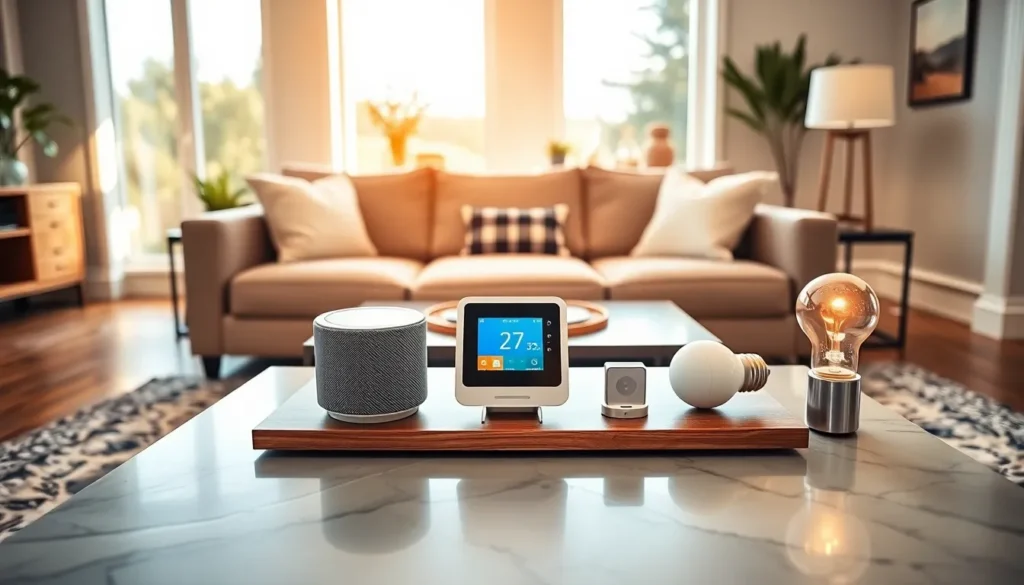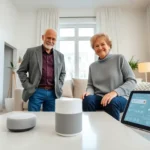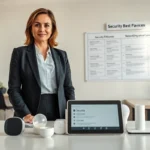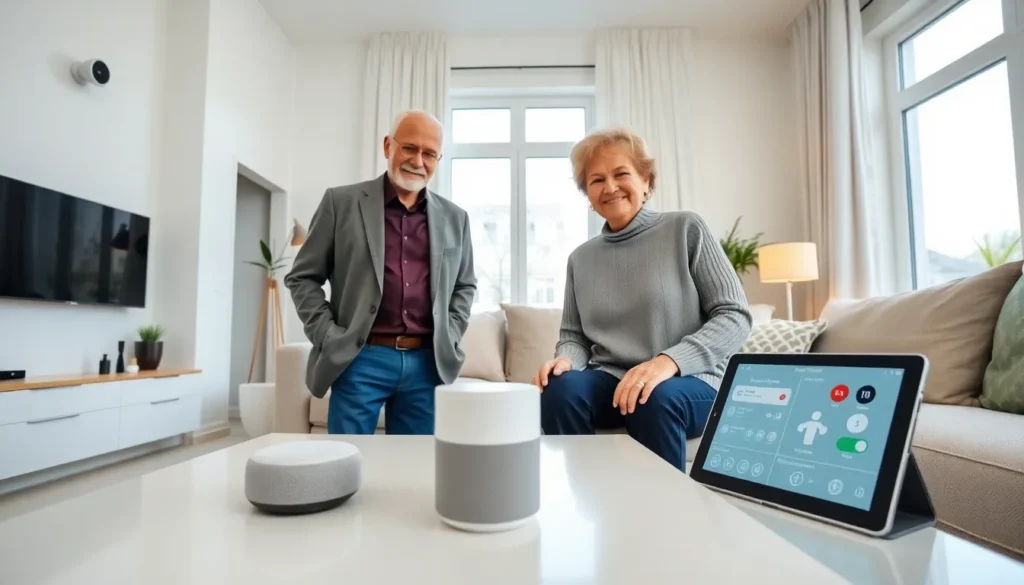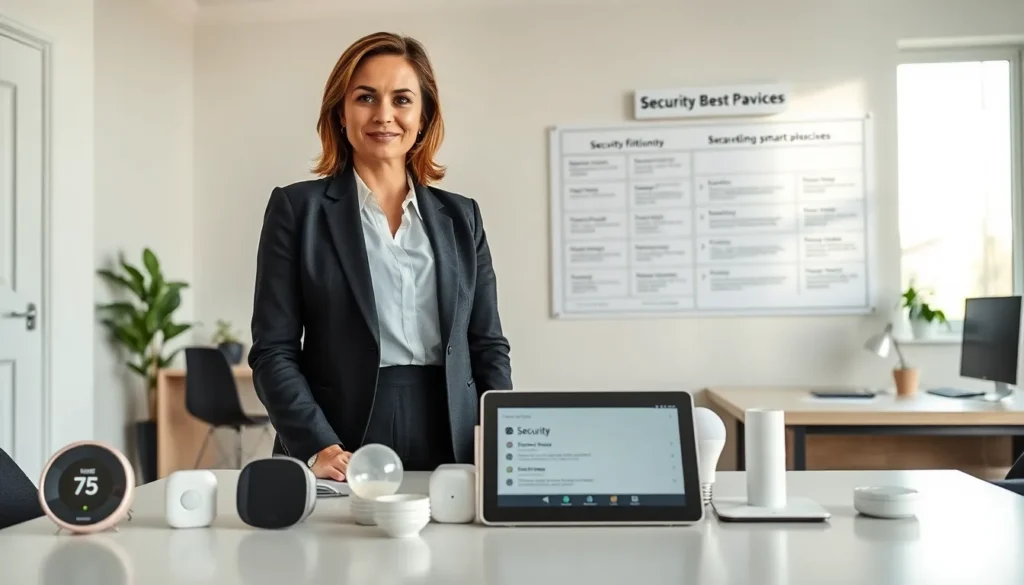Have you ever dreamed of a home that practically runs itself? Imagine turning on lights with a simple voice command or adjusting the thermostat without even getting off the couch. Smart home devices are not just a trend, they’re a lifestyle upgrade. They come packed with convenience and security, making daily routines smoother and your home life more enjoyable. Let’s jump into the must-have devices that can transform a mundane house into a tech-savvy haven, all while embracing the quirky charm of modern living.
Table of Contents
ToggleBenefits of Smart Home Devices
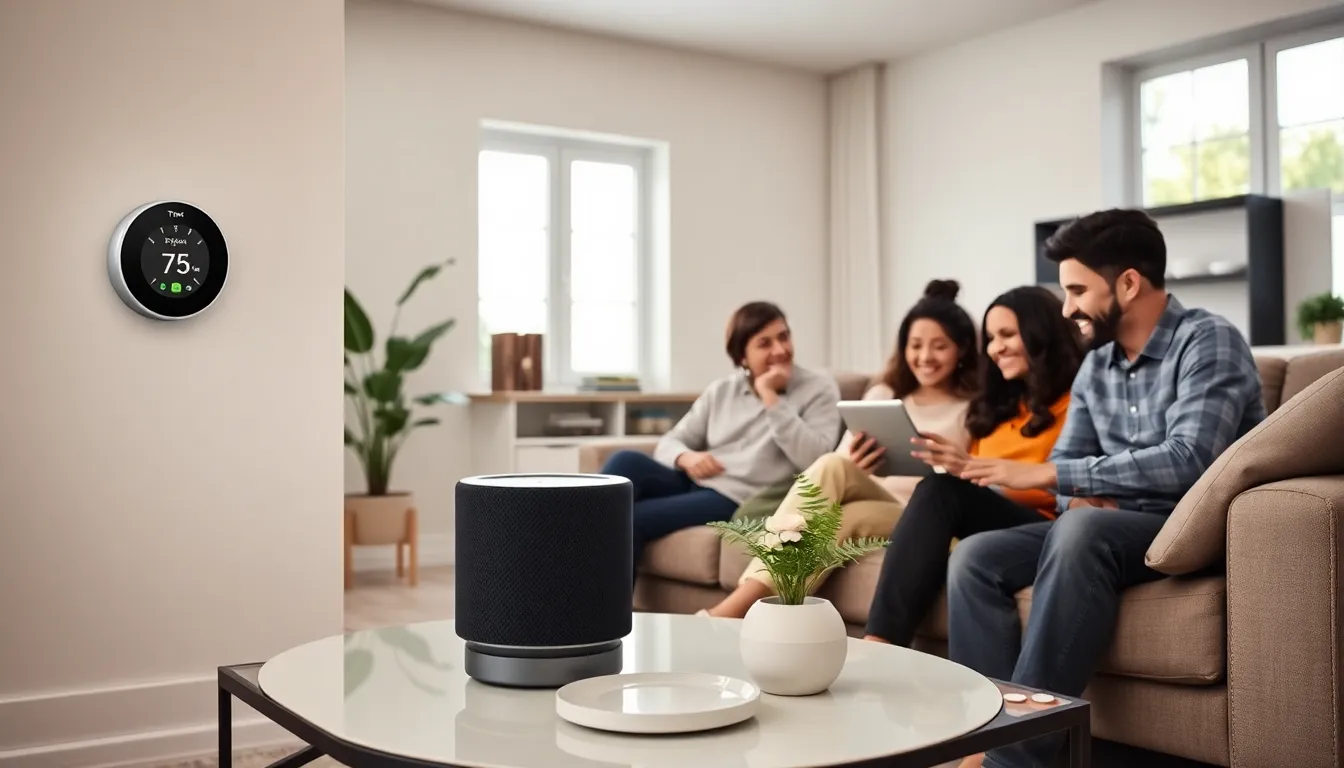
Smart home devices boast an array of benefits that go beyond mere novelty. For starters, they enhance convenience. With a few taps on a smartphone or a simple voice command, individuals can manage various household functions seamlessly. Imagine brewing coffee without lifting a finger.
Also, smart devices often lead to energy savings. Smart thermostats learn heating patterns, optimizing energy usage based on individual habits. Over time, this could significantly reduce energy bills, a win-win for both the wallet and the planet.
Security is another significant benefit. Smart cameras and sensors provide real-time updates on the home environment, offering peace of mind especially for those who travel frequently. Also, many smart devices integrate effortlessly with each other, creating a cohesive ecosystem that further enhances home management.
All these benefits contribute to an elevated lifestyle, making smart home technology not just trendy but transformative.
Key Categories of Smart Home Devices
When delving into the world of smart devices, it’s helpful to categorize them by function. Let’s break down the essentials:
1. Smart Security Devices
These devices rank high on the list of priorities for many homeowners. Imagine receiving a notification whenever someone approaches your front door. With smart doorbells and cameras, individuals can monitor their property from anywhere in the world. Many systems also allow for remote locking and unlocking of doors, ensuring that even if someone forgets, they can secure their home in an instant.
2. Smart Lighting Solutions
Forget about fumbling for light switches in the dark. Smart bulbs can be controlled via apps or voice commands, letting you adjust ambiance at will. They can also automatically sync with sunset and sunrise or change colors to match your mood, perfect for setting the scene during movie night.
3. Smart Thermostats and HVAC Systems
Why pay more to heat or cool your home than you need to? Smart thermostats can learn individual habits and adjust temperatures accordingly. You can even control them remotely, ensuring your home is always the perfect temperature, whether you’re home or away.
4. Smart Speakers and Voice Assistants
These devices act as the hub for your smart home. By responding to voice commands, smart speakers can play music, check the weather, or control other smart devices with just a simple request. They’re like having a personal assistant at your beck and call.
5. Smart Appliances
From refrigerators that remind you when you’re out of milk to washing machines that you can start remotely, smart appliances infuse intelligence into everyday chores. These devices not only increase efficiency but also offer advanced features that can take cooking or cleaning to the next level.
Choosing the Right Smart Home Devices for Your Needs
Selecting the right smart home devices might feel overwhelming given the multitude of options available. Start by assessing daily habits. Consider which activities could benefit from automation.
Next, think about compatibility. Many devices work best within specific ecosystems, like Google Home or Amazon Alexa. Ensuring that devices work together can make for a more seamless experience.
Budget is another crucial factor. While investing in smart technology can save money in the long run, it’s essential to find devices that align with financial capabilities. Begin with a few key pieces before expanding your smart home collection.
Tips for Integrating Smart Devices into Your Home
Integrating smart devices should be an enjoyable process rather than a hassle. Start small by choosing a central hub, like a smart speaker, to control other devices. This approach can simplify setup and management.
Establish a consistent naming system for devices. For example, calling your living room lights “Living Room Lights” versus arbitrary names can simplify voice commands.
Another great tip is to use automation features. Set routines based on time of day or specific triggers, like turning off all devices at bedtime. These routines will not only add convenience but also promote energy efficiency throughout the home.
Future Trends in Smart Home Technology
As technology evolves, so too do smart home devices. Anticipate advancements in artificial intelligence that will lead to even more intuitive home management. Imagine devices that learn your preferences and habits even faster, making automatic adjustments without needing user input.
Sustainability is also becoming a focal point. Emerging smart devices may use renewable energy sources and provide users with reports on energy consumption, fostering environmentally friendly habits.
Finally, increased interoperability across devices is on the horizon. As manufacturers collaborate, expect a more integrated and cohesive smart home experience, allowing all devices to communicate effortlessly.

